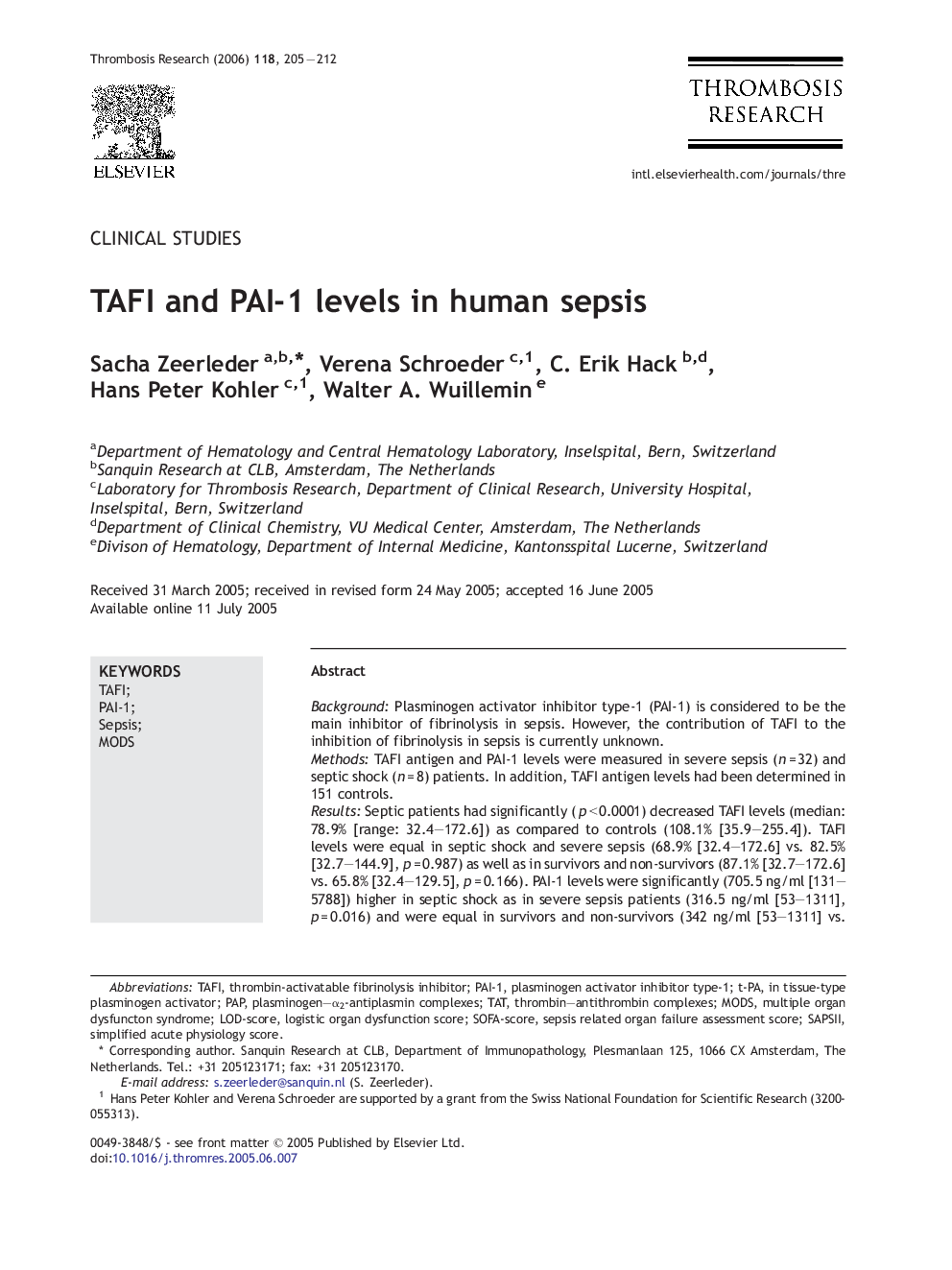| Article ID | Journal | Published Year | Pages | File Type |
|---|---|---|---|---|
| 3030354 | Thrombosis Research | 2006 | 8 Pages |
BackgroundPlasminogen activator inhibitor type-1 (PAI-1) is considered to be the main inhibitor of fibrinolysis in sepsis. However, the contribution of TAFI to the inhibition of fibrinolysis in sepsis is currently unknown.MethodsTAFI antigen and PAI-1 levels were measured in severe sepsis (n = 32) and septic shock (n = 8) patients. In addition, TAFI antigen levels had been determined in 151 controls.ResultsSeptic patients had significantly (p < 0.0001) decreased TAFI levels (median: 78.9% [range: 32.4–172.6]) as compared to controls (108.1% [35.9–255.4]). TAFI levels were equal in septic shock and severe sepsis (68.9% [32.4–172.6] vs. 82.5% [32.7–144.9], p = 0.987) as well as in survivors and non-survivors (87.1% [32.7–172.6] vs. 65.8% [32.4–129.5], p = 0.166). PAI-1 levels were significantly (705.5 ng/ml [131–5788]) higher in septic shock as in severe sepsis patients (316.5 ng/ml [53–1311], p = 0.016) and were equal in survivors and non-survivors (342 ng/ml [53–1311] vs. 413 ng/ml [55–5788], p = 0.231). TAT / PAP ratio (R(TAT / PAP)) reflecting the dysbalance between coagulation and fibrinolysis was calculated. R(TAT / PAP) significantly increased with fatality and was significantly dependent on PAI-1, but not on TAFI. PAI-1 levels (570.5 ng/ml [135–5788]) and R(TAT / PAP) (1.6 [0.3–6.1]) were significantly (p = 0.008 and p = 0.047) higher in patients with overt DIC as compared to patients without overt DIC (310 ng/ml [53–1128] and 0.6 [0.1–4.3]), whereas no difference was found for TAFI levels (68.9% [32.7–133.2] vs. 86.4% [32.4–172.6], p = 0.325).ConclusionsAlthough inhibition in sepsis is mediated by both, PAI-1 might be involved early in the sepsis process, whereas TAFI might be responsible for ongoing fibrinolysis inhibition in later stages of sepsis.
